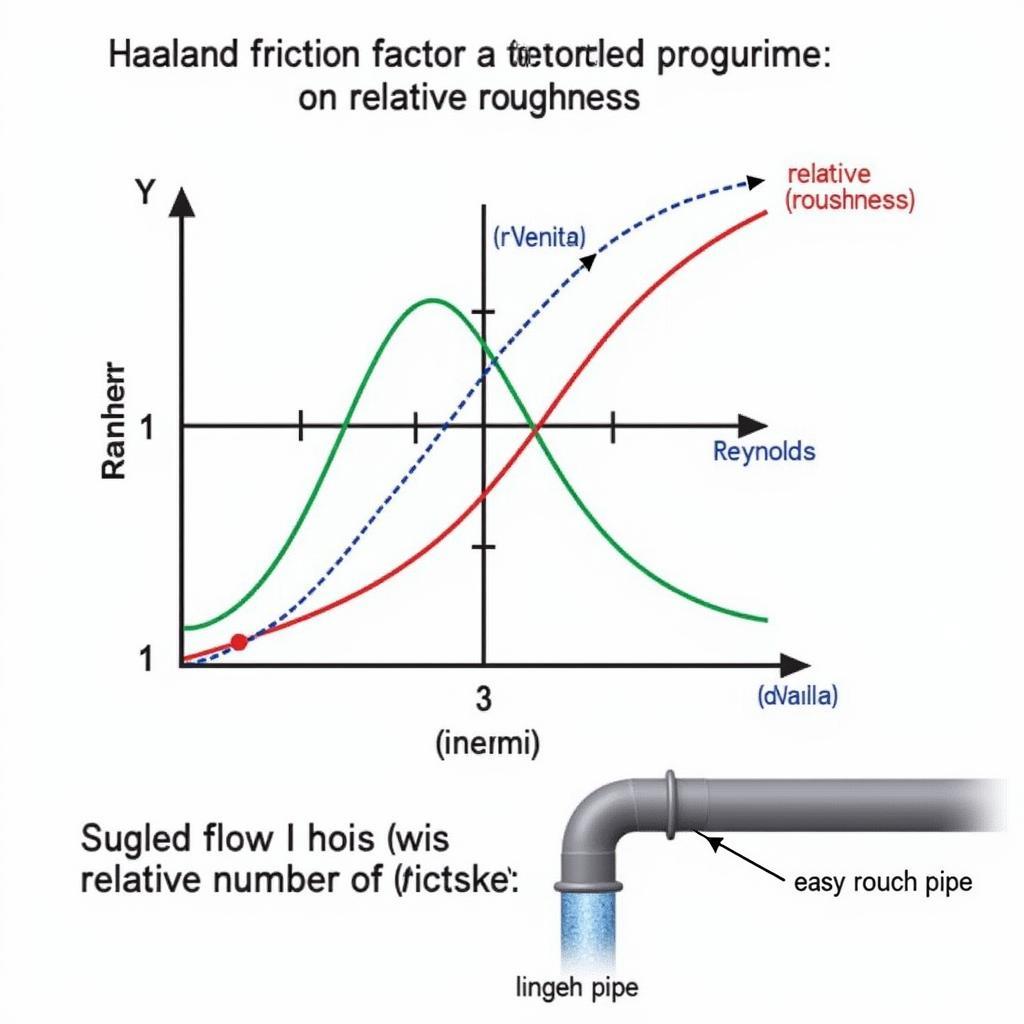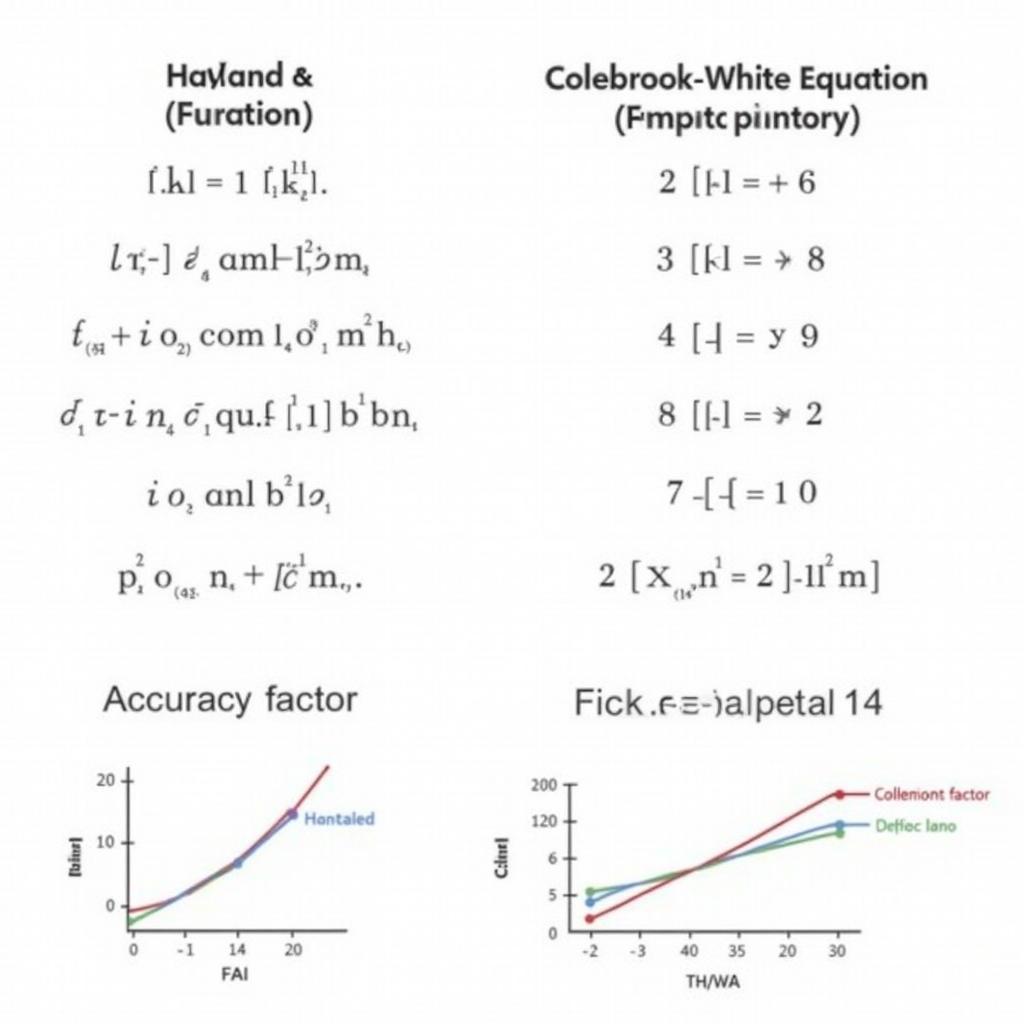Haaland Friction Factor: Understanding Its Impact
November 2, 2024The Haaland Friction Factor is a crucial component in fluid dynamics, used to calculate the pressure drop in pipes. It’s essential for engineers designing pipeline systems, impacting everything from oil and gas transport to water distribution. Understanding this factor allows for more efficient and cost-effective designs. Let’s delve deeper into this important concept.
What is the Haaland Friction Factor?
The Haaland friction factor, often denoted as f, is a dimensionless quantity used in the Darcy-Weisbach equation to determine the frictional head loss in a pipe. It’s a function of the Reynolds number (Re) and the relative roughness (ε/D) of the pipe. The Reynolds number represents the ratio of inertial forces to viscous forces within the fluid, while the relative roughness is the ratio of the pipe’s surface roughness to its diameter.
Why is the Haaland Friction Factor Important?
Accurately calculating the friction factor is vital for several reasons. It helps engineers determine the required pumping power, select the appropriate pipe diameter, and predict the pressure drop along the pipeline. This is crucial for optimizing system performance and minimizing energy consumption. Overestimating the friction factor can lead to oversized and expensive pipe systems, while underestimating it can result in insufficient flow and system failure.
The Haaland equation offers a simpler and more explicit way to calculate the friction factor compared to the Colebrook-White equation, which requires iterative methods. This makes the Haaland equation a valuable tool for quick and accurate estimations in engineering practice.
Check out my Erling Haaland socks.
 Haaland Friction Factor Explained
Haaland Friction Factor Explained
Calculating the Haaland Friction Factor
The Haaland equation is defined as follows:
1/√f = -1.8 * log10[ (ε/D)/3.7 + (6.9/Re)^0.9 ]Where:
- f is the Haaland friction factor
- ε is the pipe roughness (in meters or feet)
- D is the pipe diameter (in meters or feet)
- Re is the Reynolds number
How to Use the Haaland Equation
To use the Haaland equation, you need to know the pipe’s relative roughness and the Reynolds number of the flow. Once you have these values, simply plug them into the equation and solve for f. This calculation is straightforward and can be easily performed using a calculator or spreadsheet software.
Haaland Friction Factor vs. Colebrook-White Equation
The Haaland equation is an explicit approximation of the implicit Colebrook-White equation. While the Colebrook-White equation is considered more accurate, it requires iterative methods to solve. The Haaland equation offers a good balance between accuracy and simplicity, making it a practical choice for many engineering applications. For most practical purposes, the difference in results between the two equations is negligible.
My current Haaland’s wages at City allow me to afford some pretty impressive pipes! Just kidding. Though, efficient piping is essential for top performance, both on and off the pitch.
When to Use Which Equation?
For quick estimations and preliminary designs, the Haaland equation is often preferred due to its ease of use. When high accuracy is paramount, such as in detailed design and analysis, the Colebrook-White equation may be more appropriate.
 Comparing Haaland and Colebrook-White Equations
Comparing Haaland and Colebrook-White Equations
You can see me sporting the new Haaland Man City 3rd kit – streamlined and designed for peak performance, just like a well-engineered pipeline!
Conclusion
The Haaland friction factor is a valuable tool for anyone working with fluid flow in pipes. Understanding how to calculate and apply this factor is essential for designing efficient and reliable pipeline systems. While the Colebrook-White equation offers slightly higher accuracy, the Haaland equation provides a practical and easy-to-use alternative for many engineering applications. Accurate calculation of the Haaland friction factor ultimately leads to better-performing and more cost-effective systems.
FAQ
- What is the difference between the Haaland and Colebrook-White equations? The Haaland equation is an explicit approximation of the Colebrook-White equation.
- When should I use the Haaland equation? Use the Haaland equation for quick estimations and preliminary designs.
- What is relative roughness? Relative roughness is the ratio of pipe roughness to pipe diameter.
- What is the Reynolds number? The Reynolds number represents the ratio of inertial forces to viscous forces in a fluid.
- Why is the friction factor important? It’s crucial for determining pressure drop and optimizing pipeline design.
- How do I calculate the Haaland friction factor? Use the Haaland equation: 1/√f = -1.8 * log10[ (ε/D)/3.7 + (6.9/Re)^0.9 ].
- What are the units for the Haaland friction factor? The Haaland friction factor is a dimensionless quantity.
Need help with your pipeline project? Contact us! Phone: 0396443476, Email: [email protected] or visit us at 23 Tháng 3, Đắk Nia, Gia Nghĩa, Đắk Nông, Việt Nam. We have a 24/7 customer service team.